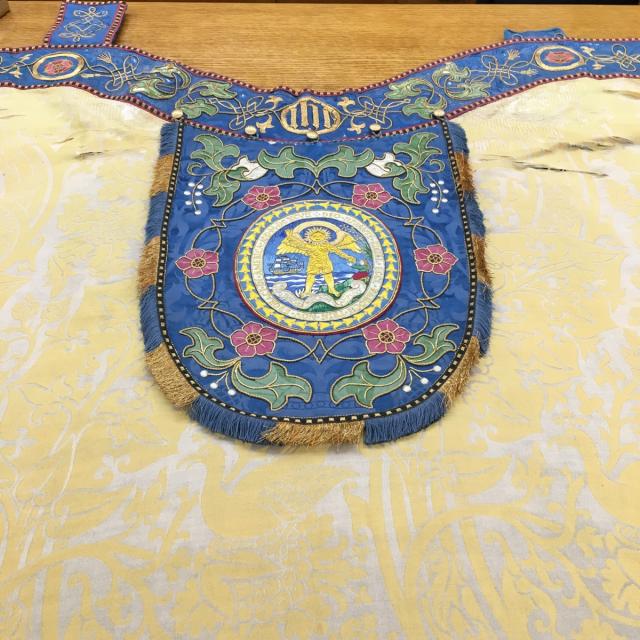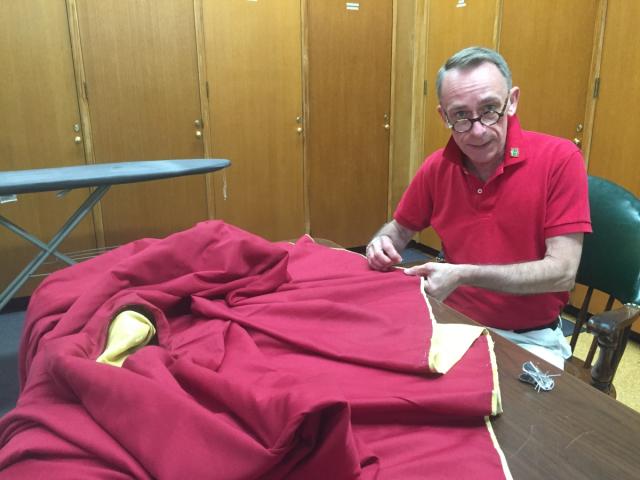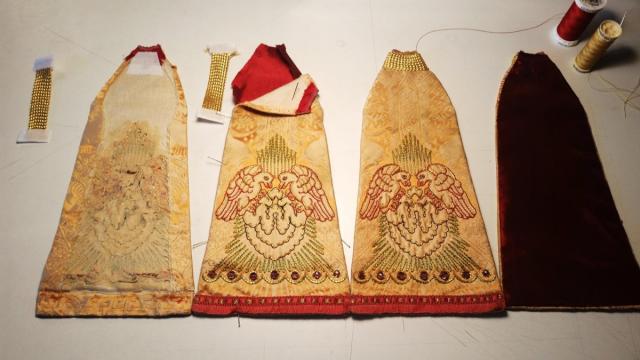Restoring the Rector's Cope
What do you do when your parish’s frontals and vestments begin to show signs of wear and tear? They can be replaced—or repaired.
When it came to Trinity’s Rector’s cope, it was an easy decision for Head Sacristan Scott Smith. “It’s absolutely one of the most magnificent things we have. It’s the definitive version of the Trinity seal.”
A cope is a large cape worn by clergy for formal, ceremonial occasions.
Smith had long wondered about a photograph of an intricate version of the seal of Trinity Church hanging in the parish offices. One day, while sorting through a drawer of liturgical paraphernalia, he realized the photograph was of a board—a back piece from a cope—sitting in that drawer. With help from Assistant Sacristan Maria Moller, Smith matched it to what is known as the Rector’s cope. Though the cope and board were beautiful, both were badly in need of repair.
Enter Steven Leavitt, sole proprietor of Transfiguration Vestments. After his thirty-plus year career in the fashion industry slowed down, Leavitt offered to repair a worn frontal from his parish, Transfiguration, and his company was born.
Leavitt is currently in the process of restoring and repairing a number of vestments and frontals for Trinity, including the Rector’s Cope, which dates to the 1930s. It’s one of the oldest pieces Leavitt has worked on. The only piece that may be older is a ciborium veil, a four-sided cover for the consecrated host, from the Church of St. Luke in the Fields.
“I had no idea what this thing was when my contact at St. Luke’s showed it to me. I’m guessing it’s somewhere between seventy-five, maybe over one hundred years old. But it’s a rather unusual piece, and it’s amazing because the embroidery was so spectacularly beautiful,” Leavitt said.
“The head sacristan at St. Luke’s said, I really want to be able to use this piece again. It’s a historic piece. It’s one of the few pieces that survived the fire,” Leavitt said, referencing the 1981 fire that burned St. Luke’s 160-year-old building to the ground.
“That’s what I’m finding a lot of time—what I’m doing is preserving, restoring, repairing pieces that have some kind of significance, whether it’s a sentimental significance or a historic significance. The parish does not want to replace them.”
Leavitt is also restoring Trinity's golden damask vestment and frontal set.


